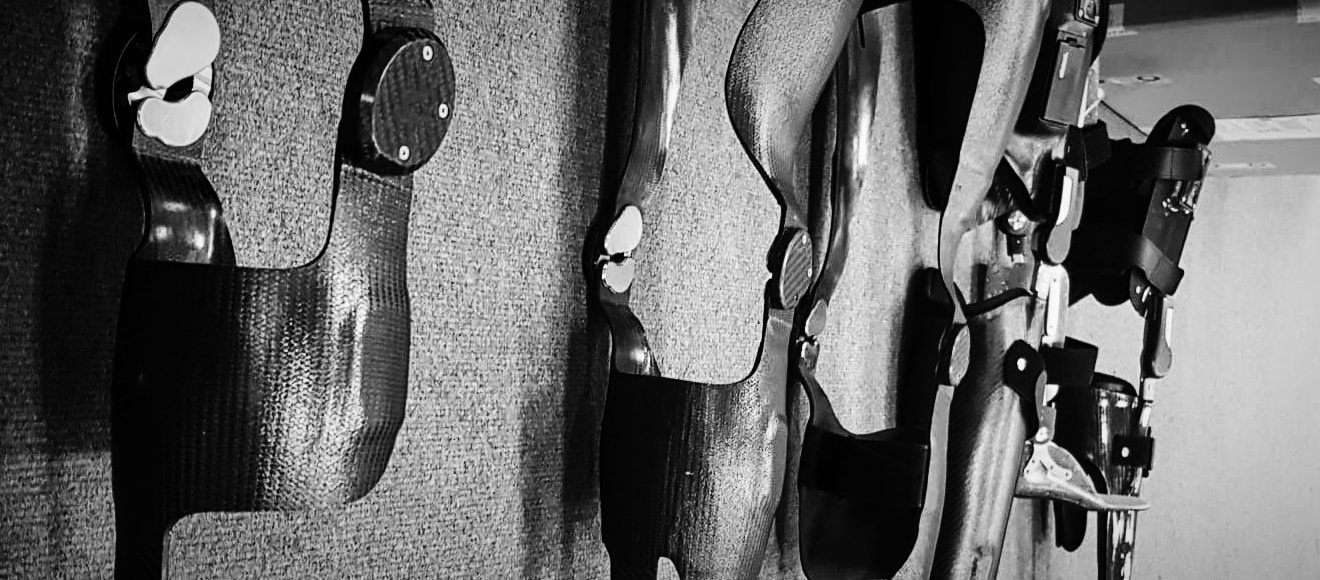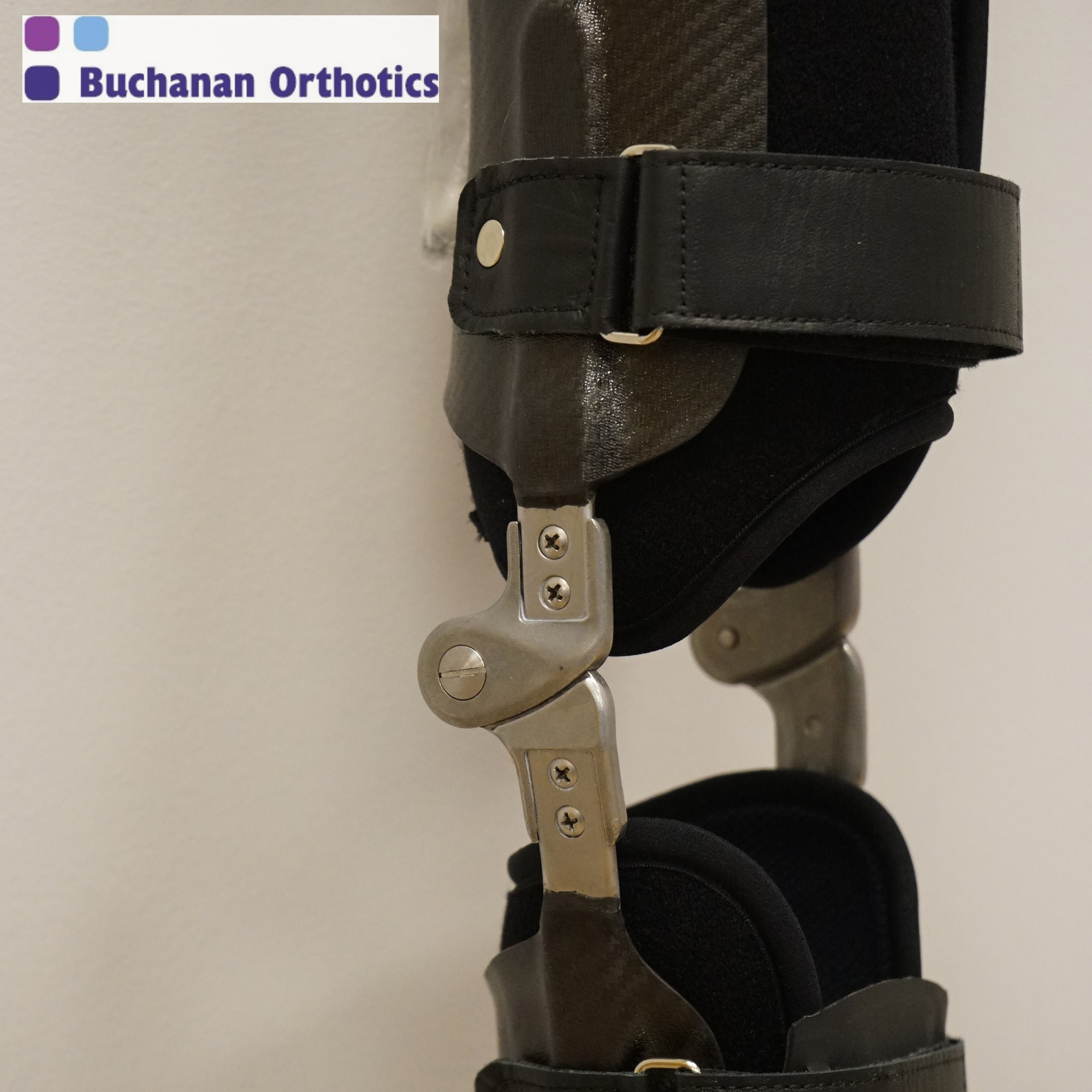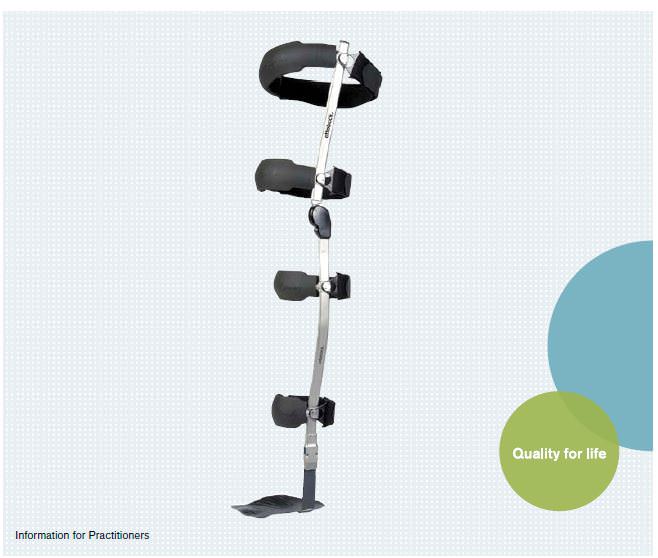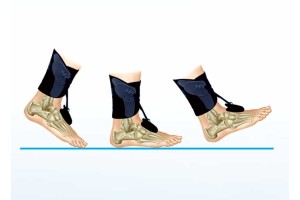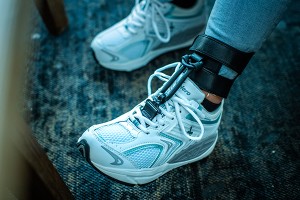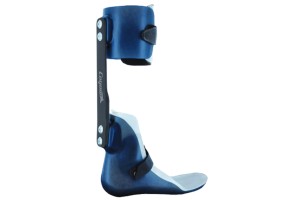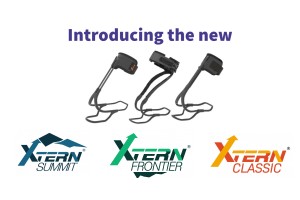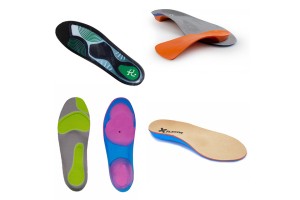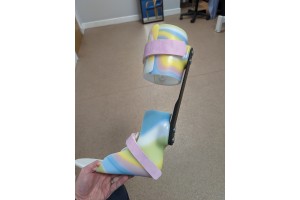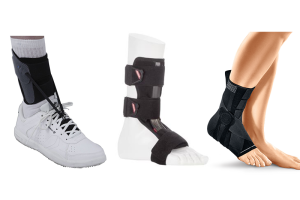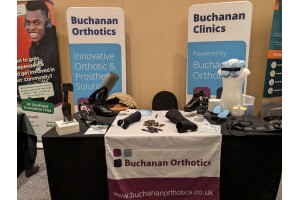Knee Ankle Foot Orthoses: A quick guide
KAFO is a general classification for an orthosis that covers the knee, ankle and foot joints they are often called callipers, especially when referring to older style designs.
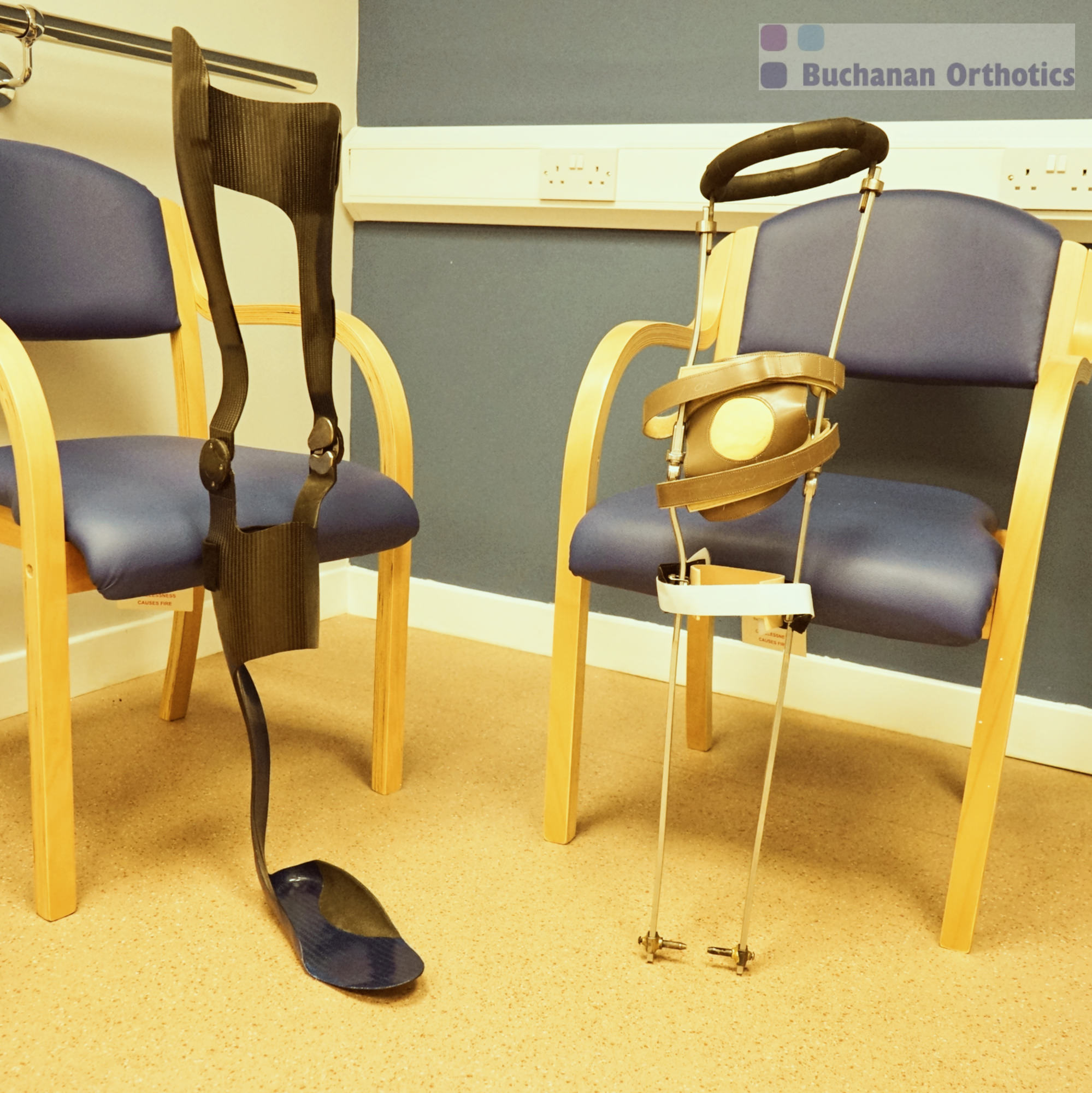
A Carbon KAFO next to a ring top conventional Caliper
Clinically there are numerous reasons an Orthotist would suggest that you may require a KAFO but generally it will fall into one or two reasons. There is a weakness that is preventing the knee from being stable or there is deformity around the knee that either requires support or correction. Often these two issues are not present in isolation and can present together.
Book an Assessment
Weakness
There are numerous causes of weakness in the lower leg like polio, nerve injury or neurological conditions which all have their own unique presentations.
A KAFO is often used when the strength in the extensor muscles of the knee (Quadriceps) is either not strong enough to prevent the knee from giving way, they fatigue causing instability when tired or the control of the muscles is poor.
In cases of isolated quadriceps weakness or injury, it is often possible to manage with a knee brace or devices such as the FreeWalk from Ottobock. However, if there is weakness below the knee as well then a KAFO is often indicated as this allows the ankle joint to be controlled as well in one device.
Deformity
KAFO's are often used in cases of deformity around the knee which is not suitable for surgical correction. Again there are causes too numerous to mention but it can occur after a traumatic injury or failed surgery.
The aim of a KAFO in this situation is often to prevent or reduce excessive knee varus (bowing) or Valgus (knocked knee) as well as for pain relief.
Classification of KAFO's
Broadly speaking KAFO's are described as being either cosmetic or conventional however hybrid devices are can be made.
Cosmetic KAFO's are generally made of plastic or carbon fibre with metal bars and joints. These will fit around the foot and go inside the shoe.
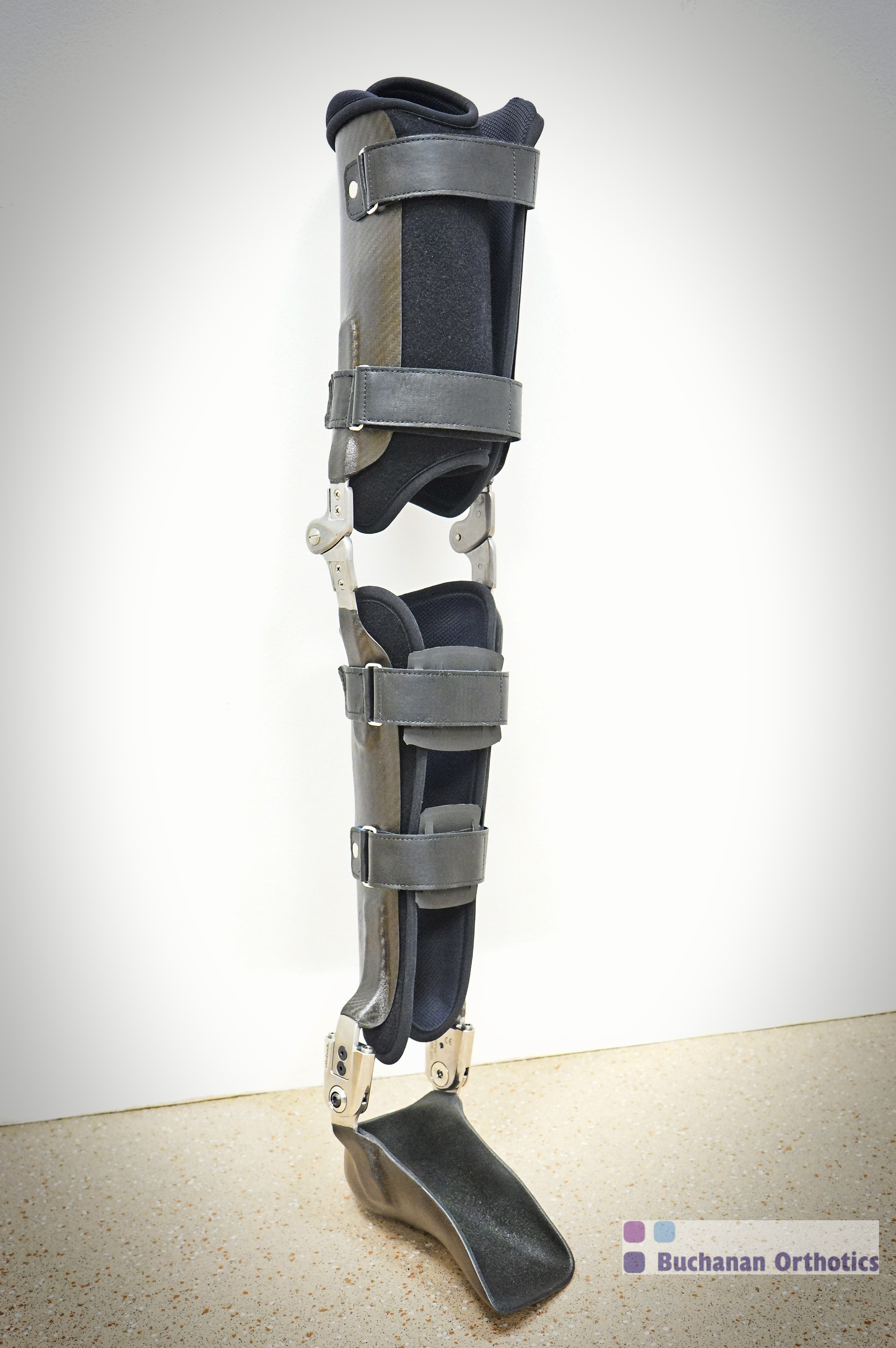
Example of a Cosmetic KAFO with free knee and ankle Joints
Conventional KAFO's are what people classically think of as a calliper and incorporate leather thigh sections and calf bands and attached via sockets which have been inserted into the heel of the shoe.
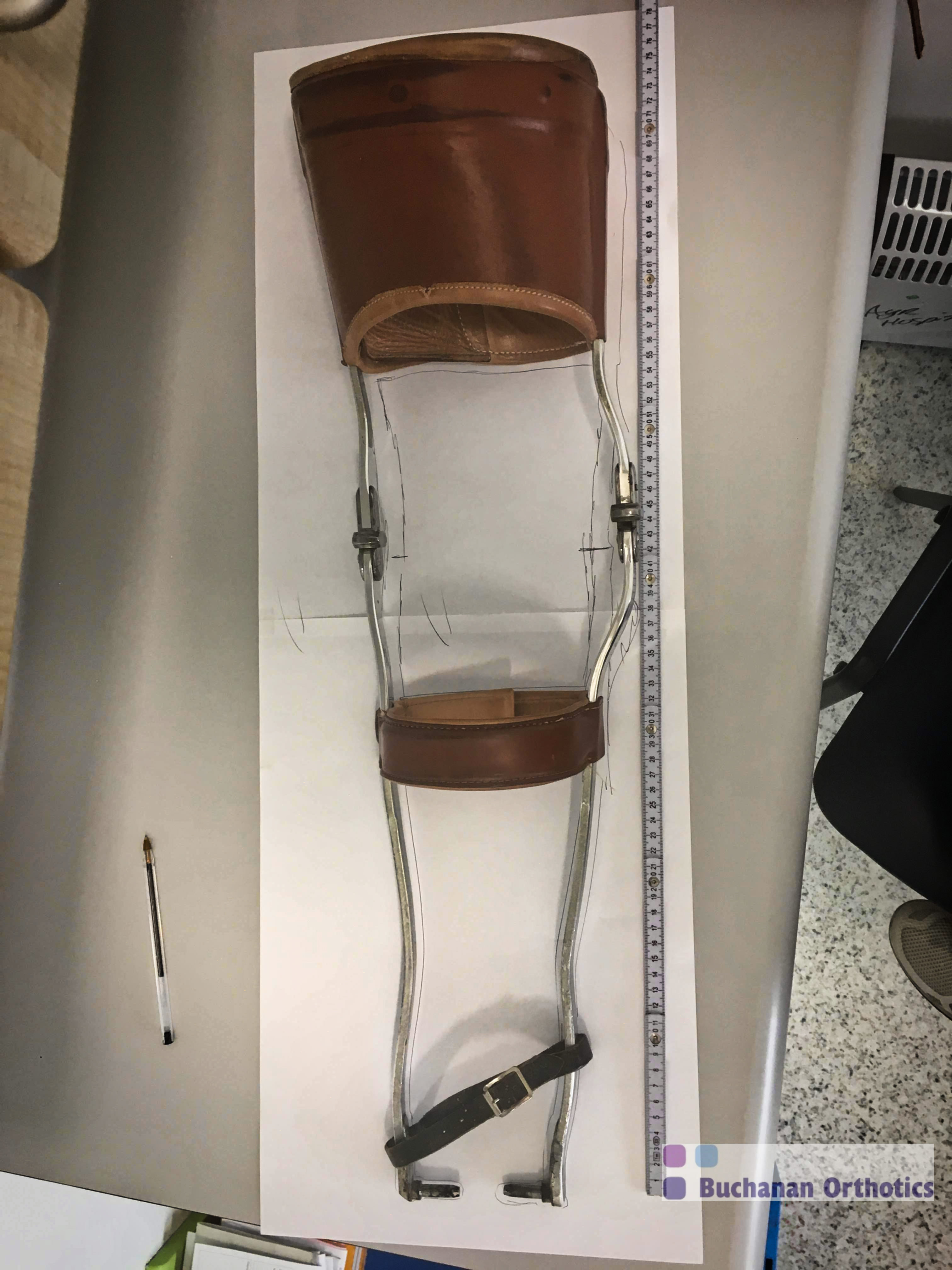
A draft of a conventional KAFO being taken to enable the production of a copy
Knee joints
Free knee
As the name suggests is free and does not lock. There are lots of options and are selected depending on the aim of the KAFO. These joints are often used when correcting deformity around the knee when there is no weakness present. However, through correct joint selection and alignment can be used when extensor weakness is present. While it is desirable to keep the knee unlocked it does not come with out risk. A free knee is at risk of suddenly unlocking on downwards slopes or on uneven ground.
A posterior offset free knee joint
Locked knee
These knee joints lock when the knee is straight and come in various styles like ring, wedge and trigger locks.
They are selected by your orthotist depending on the aim, design and upper limb function. Generally, they will be unlocked to enable knee flexion to sit then upon standing the lock will engage stabilising the knee. The user will then walk with a straight locked knee which will result in gait deviations to enable the straight leg to swing through.
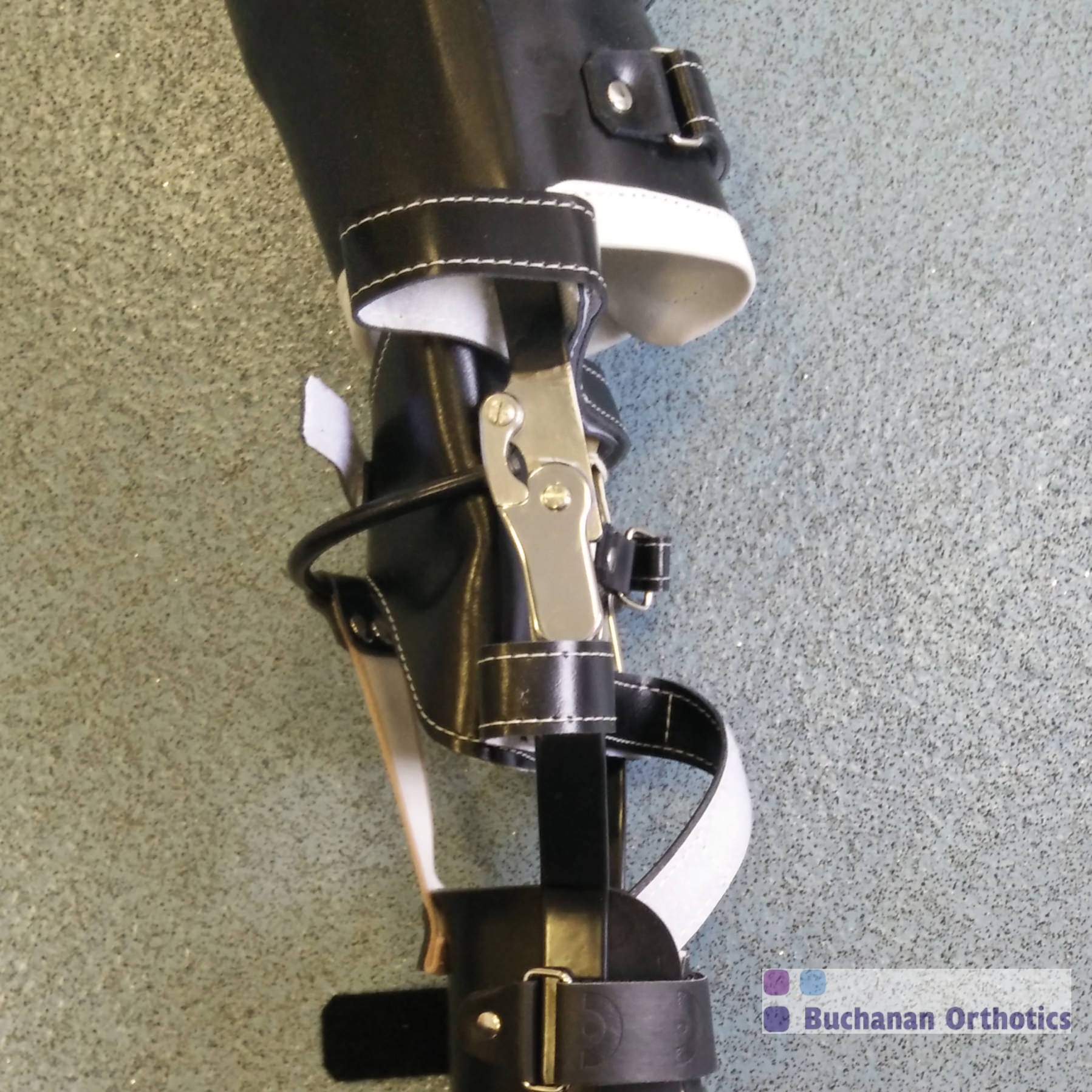
Example of a locked knee joint (pawl) with a posterior bar release
Some joints have the ability to be unlocked via a release at the thigh preventing the need to reach down to the knee to unlock them. Others require the lifting of a ring or pressing a trigger.
This Sprystep KAFO from Thuasne has a release on the lateral thigh.
Knee Caps
We can talk about knee joints without mentioning knee caps. Knee caps are a strap that fastens with either velcro or buckles and are designed to secure the knee between the thigh and calf section. They can also be used to help pull the knee straight if it is bowed or knocked.
Historically they were used in conventional calipers due to their open design but are often used in cosmetic devices as well. The use of a knee cap is often not required if the splint is designed in the correct manner however, sometimes they are unavoidable.
Often people comment that they feel more secure when they have a knee cap on the device.
Book an Assessment
Stance Control Knee
These are either mechanically or electronically controlled joints that will allow knee flexion during the swing phase of gait and will lock when the foot is on the ground preventing the knee from giving way. We have a guide to stance control orthoses for more information
The FreeWalk from OttoBock is an example of a Mechanically controlled Stance Control KAFO
The ability of the knee to bend when swinging through effectively shortens the leg preventing the need for gait deviations enabling a smoother efficient walking pattern.
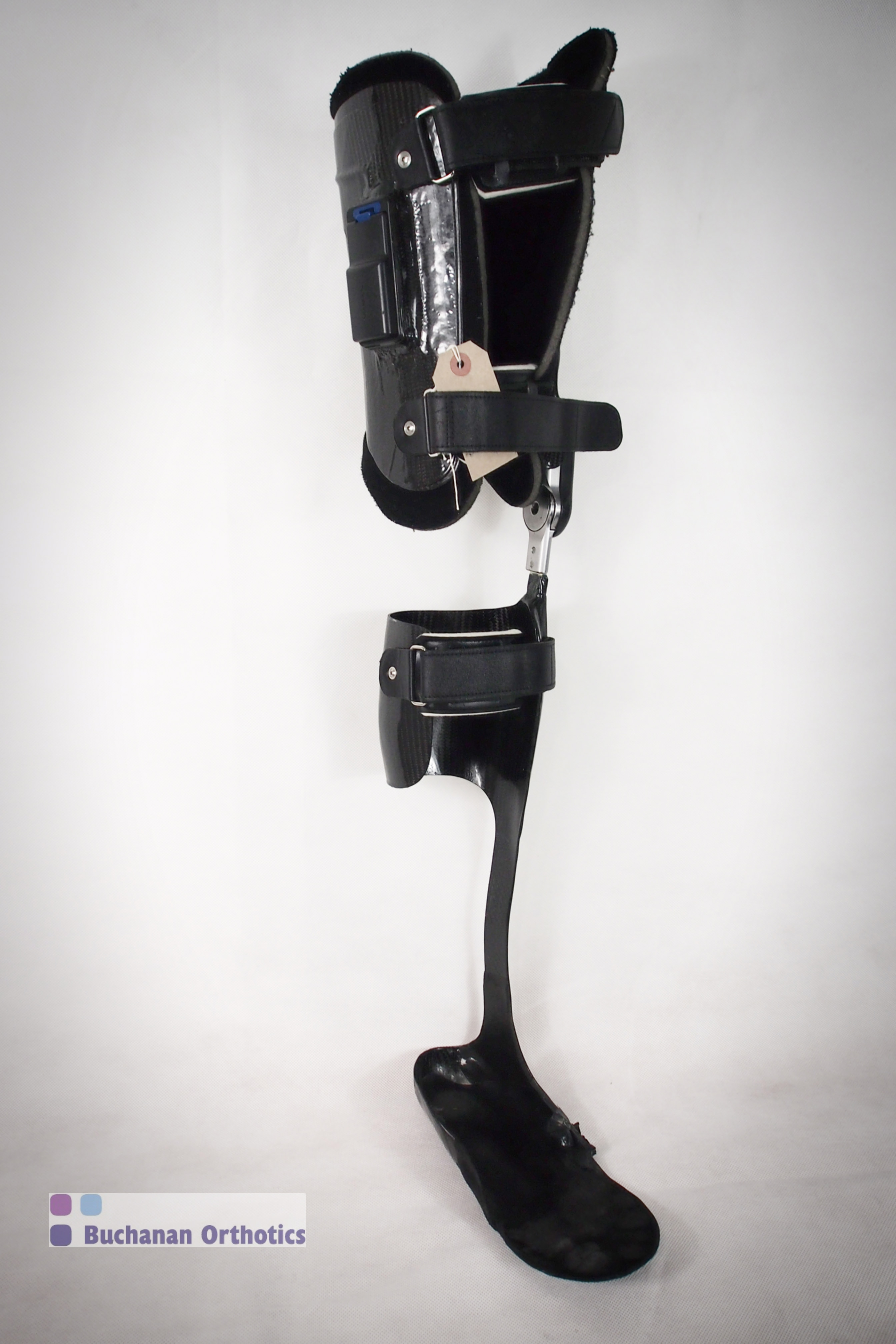
Single jointed Emag from OttoBock
Stance and swing control knee
These are emerging knee joints that control the stance and swing phase of gait these are not to be confused with exoskeletal devices as they do not power movements. We have a further guide on Stance Control devices here. The Buchanan Clinic is a Clinical Partner with OttoBock for the provision of the C-Brace in Scotland.
Ankle Joints
As with knee joints there are numerous options for the ankle. Ranging from a fixed ankle where all movement is blocked to a completely free ankle and will be dependent on the desired function of the device. Both conventional and cosmetic calipers can have joints.
Ankle Joints can be an advantage to encourage a more efficient gait pattern as it is easier to 'roll over' the foot when compared to a fixed ankle. However, they can limit the ability of the orthotist to design the brace to provide knee stability especially when using a free knee joint but often that will depend on the ankle joint selected.
The main downside to an ankle joint is increased weight and bulk around the ankle due to the metal joints.
Ankle flexion
Where it is thought that ankle joints may prove to be too bulky it is also possible to design the foot and ankle section to flex when walking. This is often achieved by making the ankle section flexible so that it bends at the correct time when walking while still providing support. This is often when we call a posterior lead spring design. These can be made in both plastic and in carbon fibre
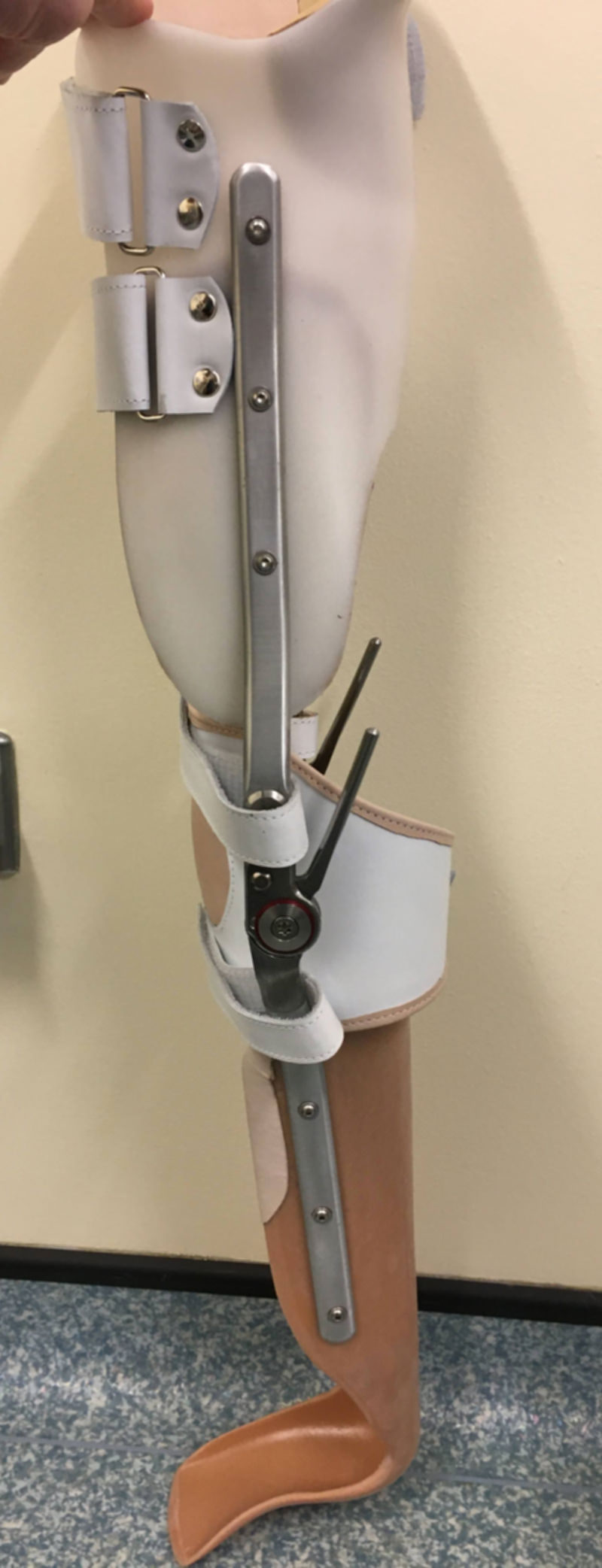
KAFO with ortholen PLS ankle section, trigger knee locks and valgus knee cap
Conventional Options
Typically Conventional KAFO's will attach into the shoe via a socket which can either be round or rectangular. The round sockets will allow movement which can be blocked with either back or front stops. In more advanced designs joints can be at the ankle and include springs to raise the foot however, they are not commonly used.
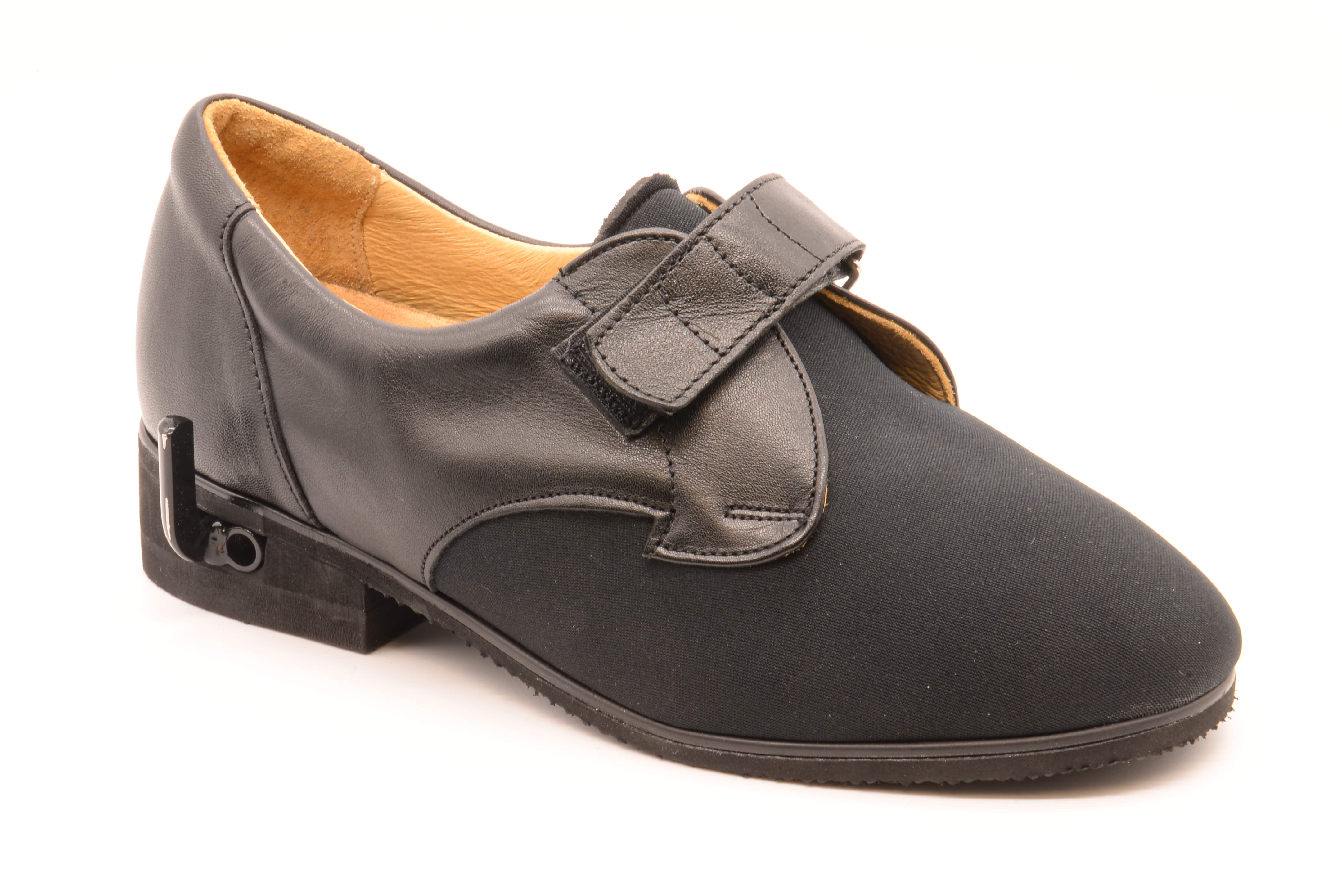
Shoe with double 5/16th Sockets with backstops
Cosmetic Options
In cosmetic KAFO's there are multiple options from spring loaded joints to rise the foot during swing through to completely free. It is also not uncommon for the AFO section (the part below the knee) to be designed to have some flex so as not to completely immobilise the ankle.
Availability on the NHS
All Scottish NHS orthotic departments will provide Callipers / KAFOs where there is clinical need. Cosmetic and conventional orthoses in plastic and leather are readily available and regularly prescribed by NHS orthotic departments.
Higher-end devices using materials like Carbon fibre, titanium and Stance Control devices are generally not funded by the NHS and not available due to the higher cost.
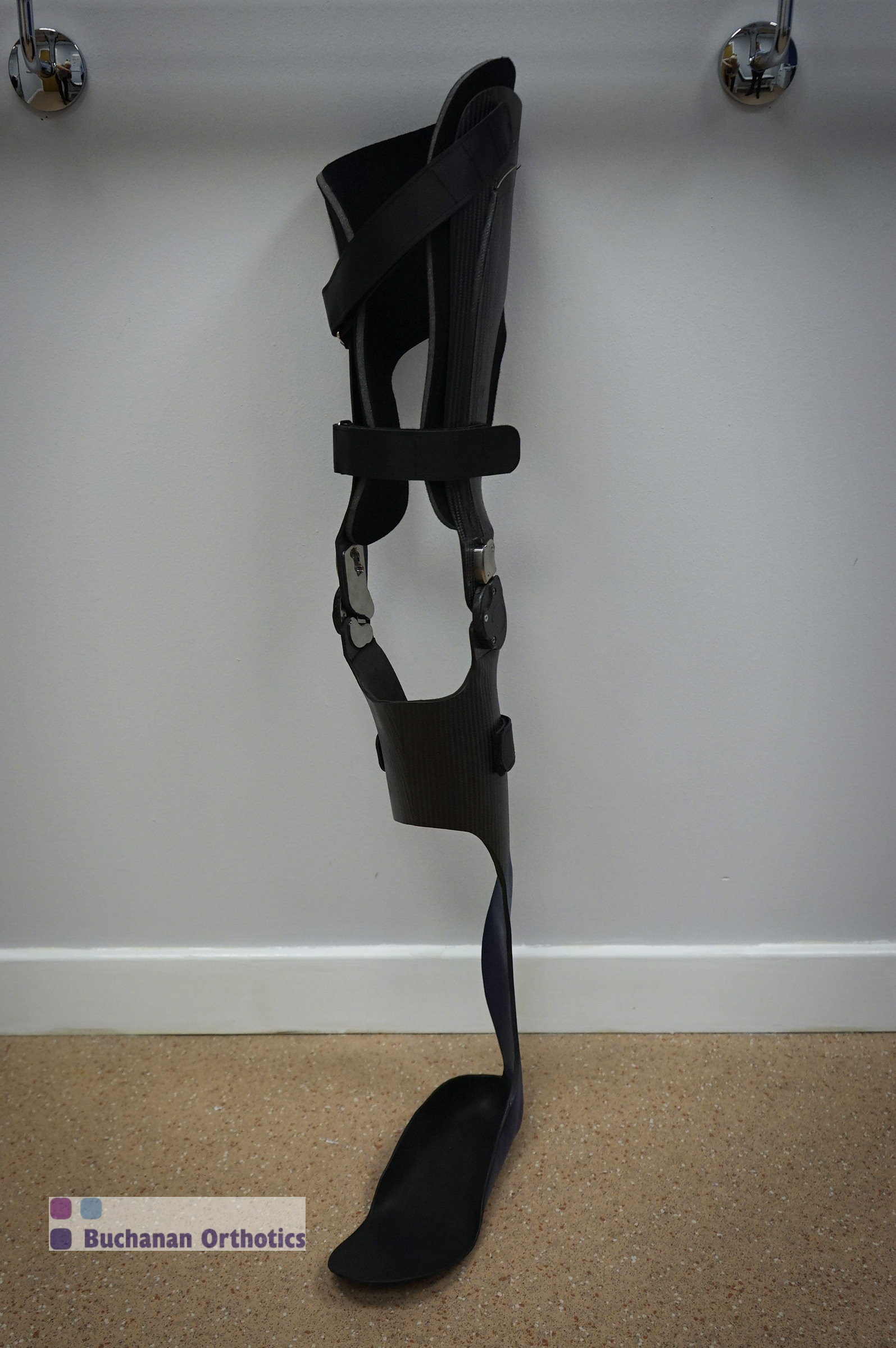
Carbon KAFO produced by Orthotic Composites for the Buchanan Clinic
Private provision
At the Buchanan clinic, our Orthotists have extensive experience in the design of KAFO's including stance control devices from various manufacturers. As we do not manufacture KAFO's components we are not restricted to certain components and can select the most suitable products and joints to maximise your mobility. If you would like to see one of our Orthotists for an assessment you can book an appointment here.
Book an Assessment
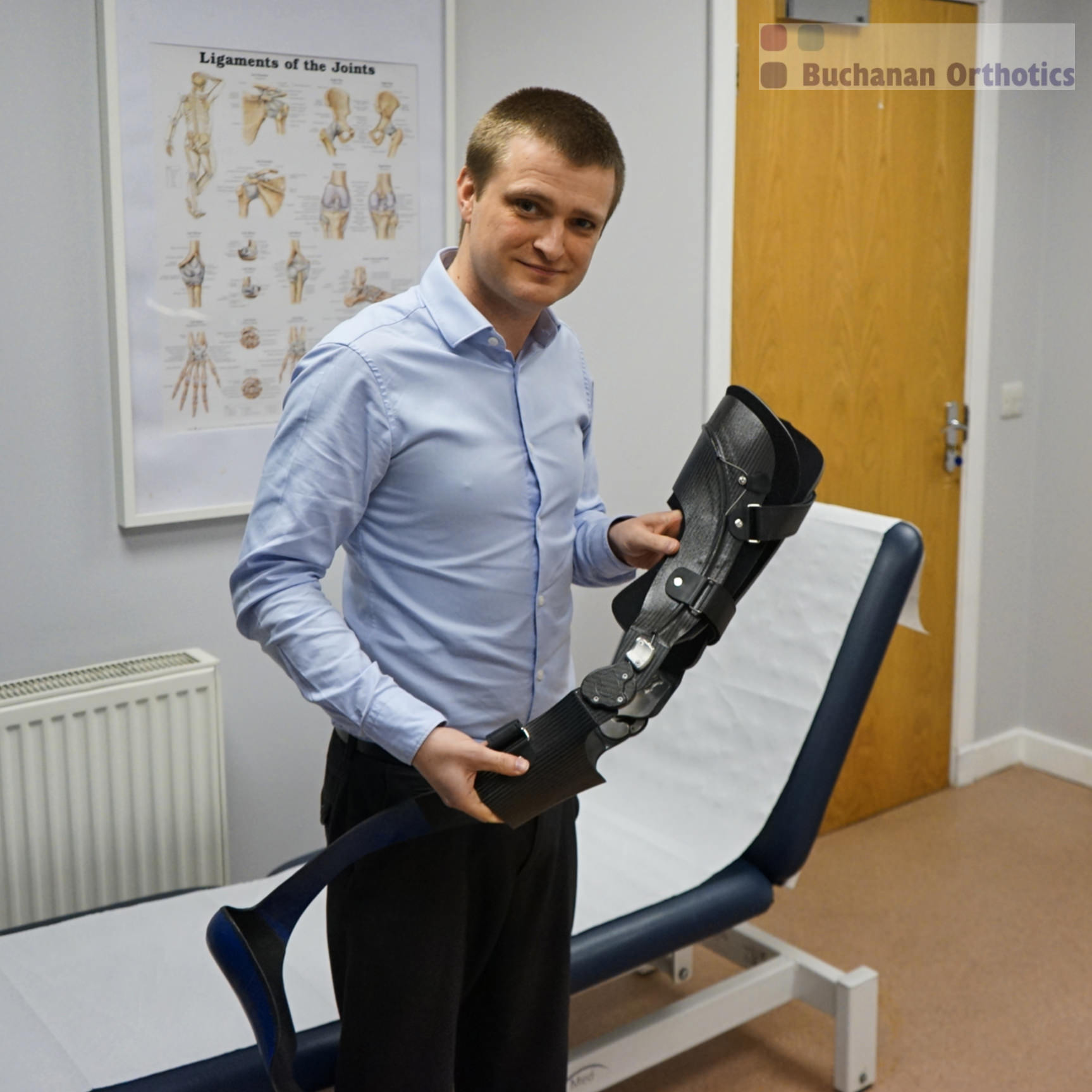
Graham checking a Carbon Fibre KAFO prior to delivery
Further Reading
Contact Details
Email: [email protected]
Call: 0141 440 1999
Address: 603 Helen Street, Glasgow, Scotland, G51 3AR
Online Booking: Buchanan Clinic Appointments

